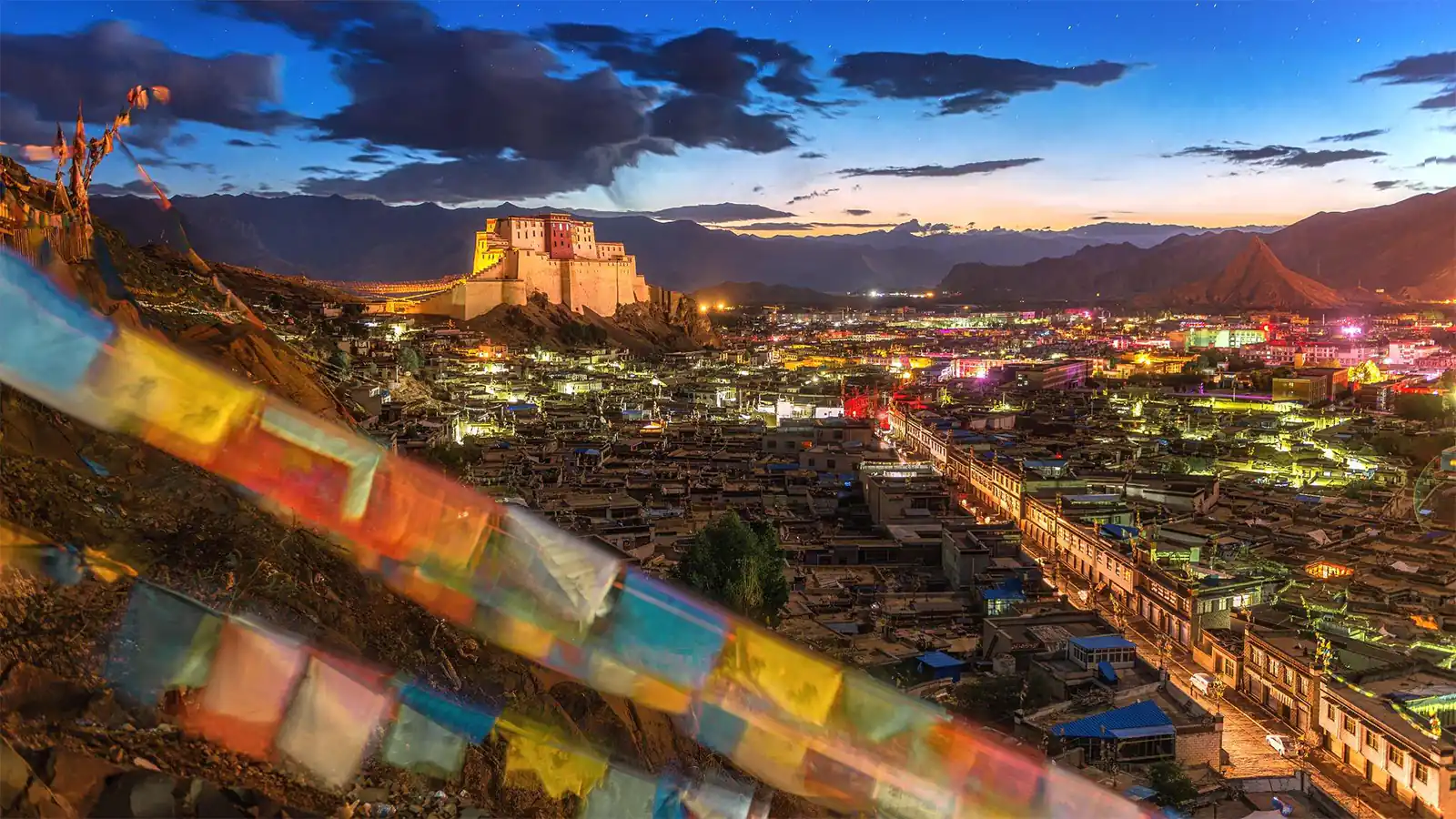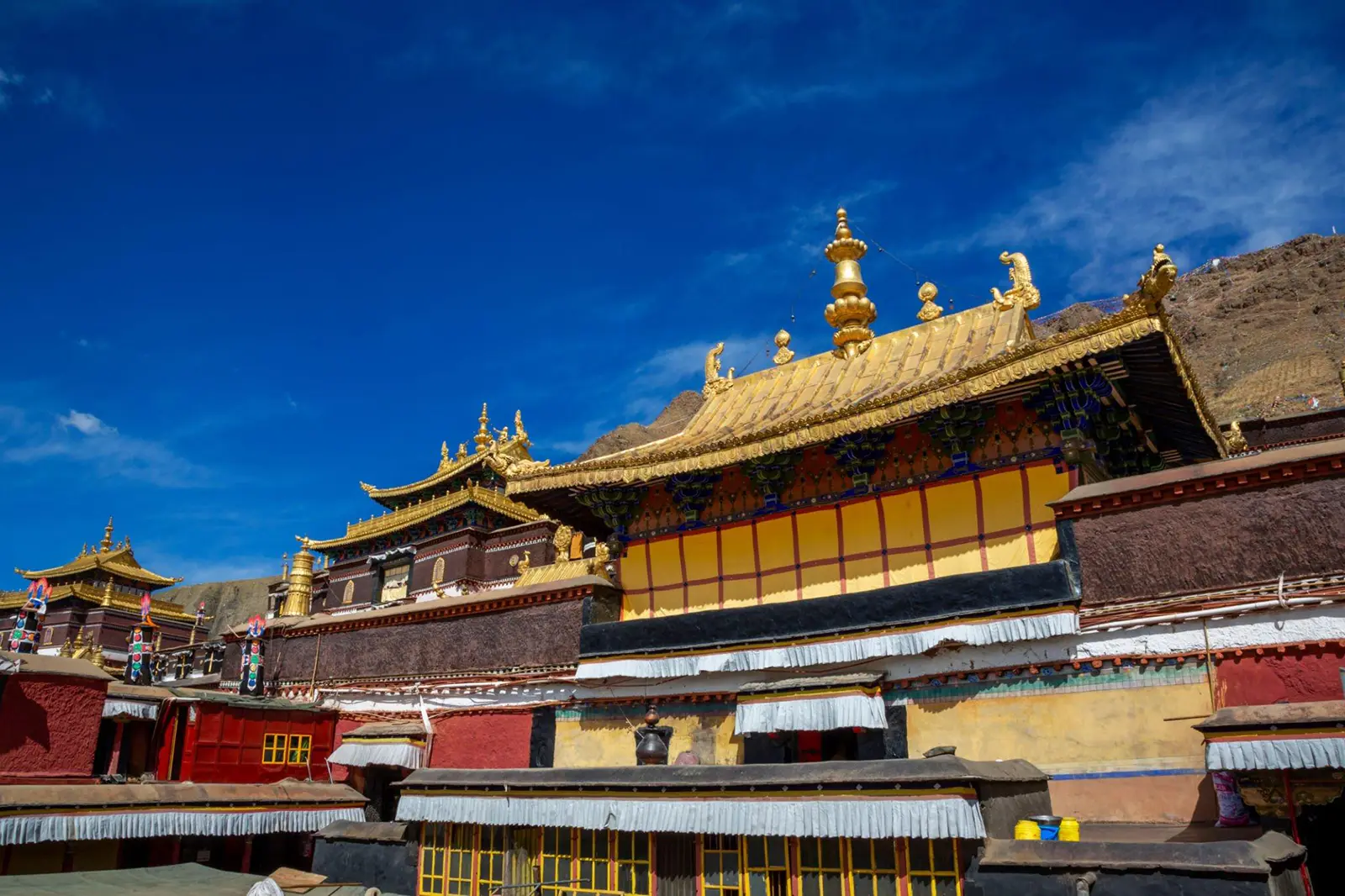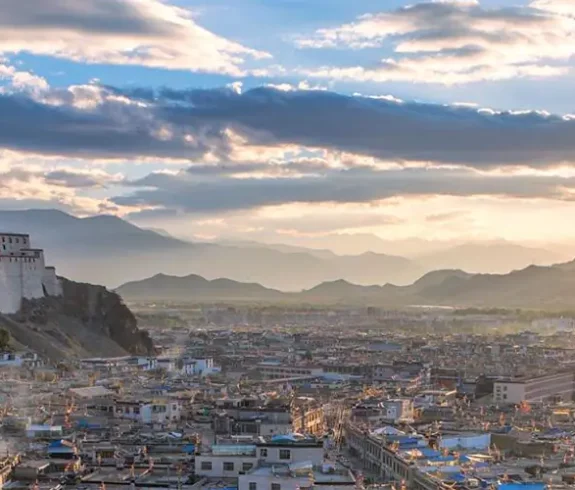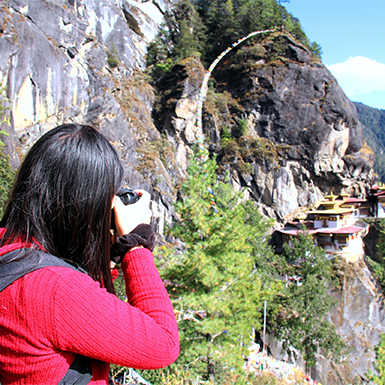The majestic city of Shigatse Dzong stands atop a hill overlooking the ancient city in Tibet, offering an impressive view of the peripheral landscape. Located in the historic city of Shigatse, the Dzong was built in the 17th century by Karma Phuntsok Namgyal, the second in the line of the Nyak family who governed Tibet from 1565 to 1642. Over the centuries, it has served as a political and religious center, and today is one of Tibet’s most important cultural sites.
Shigatse Dzong is a testament to the cultural and religious diversity that has enriched Tibet over the years and pays homage to the people who have shaped this remote and beautiful part of the world. Its formidable walls and towers remind us of the strength and resilience of Tibetan culture and tradition. The sprawling complex of temples and courtyards is a stunning example of Tibetan art, architecture, and culture.

Features
Perched atop a lofty hill at an elevation of 3,860 meters, the Shigatse Dzong overlooks the Yarlung Tsangpo (al Brahmaputra River) and Niang chu (Nyang Chu) rivers, its majestic presence a testament to the town’s former glory as the capital of U-Tsang province. Despite its high altitude, the average temperature remains moderate at 16°C in the summer and −5°C during winter.
Yet, the oxygen content of the air is most striking – at 67 percent of the sea level; the air is thin and crisp. The county, whose population is estimated at 94,000, is also named after the town of Shigatse, and the iconic Tashilhunpo Monastery stands as a reminder of its rich cultural heritage.
History
The grand Shigatse Dzong was built back in the 1700s as an emulation of the Potala Palace in Lhasa, with turrets at the ends and a majestic Red Palace in the middle. In the same century, which saw the construction of the majestic Dzong, the Mongols (led by Gusri Khan in 1642) helped the Fifth Dalai Lama and won against Prince Tsang in Shigatse.
This success brought the Tashilhunpo Monastery under the control of the Yellow Hat order. The rivalry between the Gelukpa and the Sakya sects originates in this momentous event, with the Dalai Lama from Central Tibet as the leader of the Gelukpa and the Panchen Lama from Shigatse at the head of the Sakya.
The Gurkhas made a bold move when they invaded Tibet and seized control of Shigatse, which had historically been the seat of kings and the capital of the province of U-Tsang. But their plans were thwarted when a combined Chinese and Tibetan army pushed the Gurkhas back to the outskirts of Kathmandu. Faced with no other option, the Gurkhas agreed to keep the peace, pay tribute every five years, and return whatever they had looted from Tashilhunpo.
In 1961, during the Chinese Cultural Revolution in Tibet, the Dzong was brought to ruins – slowly but surely dismantled piece by piece due to the Chinese’s instigation. Only a few traces of the Dzong were left, a monument that had once stood tall and proud above Shigatse town. Fast forward to 2005-2007, Shanghai funded the rebuilding of the Dzong from old photographs.
The newly constructed walls were made from concrete but later adorned with the original stones to give the building its original look. Now, the Dzong stands once again; only this time, it is a museum of Tibetan culture.
Attraction around Shigatse Dzong
Tashilhunpo Monastery
Established in 1447 by Gendun Drup, the First Dalai Lama, Tashilhunpo Monastery stands majestically in Shigatse. It is a renowned historical and cultural site home to the respected tulku lineage of the Panchen Lamas, the second highest ranking of its kind in the Gelukpa tradition. At the eastern side of the monastery lies the old living quarters of the Panchen Lama, known as Gudong. Visitors can access the temple that houses the tomb of the Fourth Panchen Lama through a narrow courtyard.

Shalu Monastery
Established in the 11th century, the Shalu Monastery became world-renowned in the 14th century. Buton Rinpoche, its abbot and an esteemed translator and interpreter of Sanskrit Buddhist texts, earned himself the title of ‘Buton Rinchen Drup.’ With its distinctive trans-walking and thumo (ability to generate internal heat to survive in frigid temperatures) practices, the monastery, situated 40 kilometers south of Shigatse, was also recognized for its Pala art paintings of the Newari-Tibetan-Mongol school.
They were inspired by Arniko and are believed to have profoundly influenced art in Northern and Eastern Asia for centuries. Even today, some of the monastery’s ancient paintings remain in remarkable condition. Restoration and reconstruction of the monastery to preserve its heritage and artistic legacy occurred in May 2009.
Kora
One can experience the Kora – a pilgrimage and contemplative practice in Tibetan Buddhist tradition – in Shigatse by embarking on a walking journey. The Kora begins at the entrance of the Tashilhunpo Monastery and continues on a clockwise route that passes through Mani walls, sacred rocks, a small temple, the Shigatse Dzong, and finally, back to the monastery.
Starting from the boundary wall of the Tashilhunpo Monastery, the Kora winds its way north, past prayer wheels and up into the hills to another set of prayer wheels. Along the way, a large chorten and the small Gyelwa Jampa Temple can be spotted on the right. After a series of rocks that pilgrims rub against for luck and offering incense, tsampa, or chang to a sacred fireplace, the Kora continues upward through a stone edifice resembling a cinema screen.
Here, a large Koku (Thangka religious painting) is displayed during the annual festival in late July, corresponding to the fifth Tibetan month. The journey then splits, leading the pilgrims to the Dzong before passing a Mani temple, to eventually arrive back at the entrance of the Tashilhunpo Monastery.
Conclusion
Shigatse Dzong is a remarkable example of Tibetan architecture and history. Its unique beauty and significance to the region have caught the attention of travelers worldwide, who come to explore its walls and gain insight into its past. With its spectacular environment and stunning views, Shigatse Dzong is genuinely a place that must be experienced to be appreciated.


